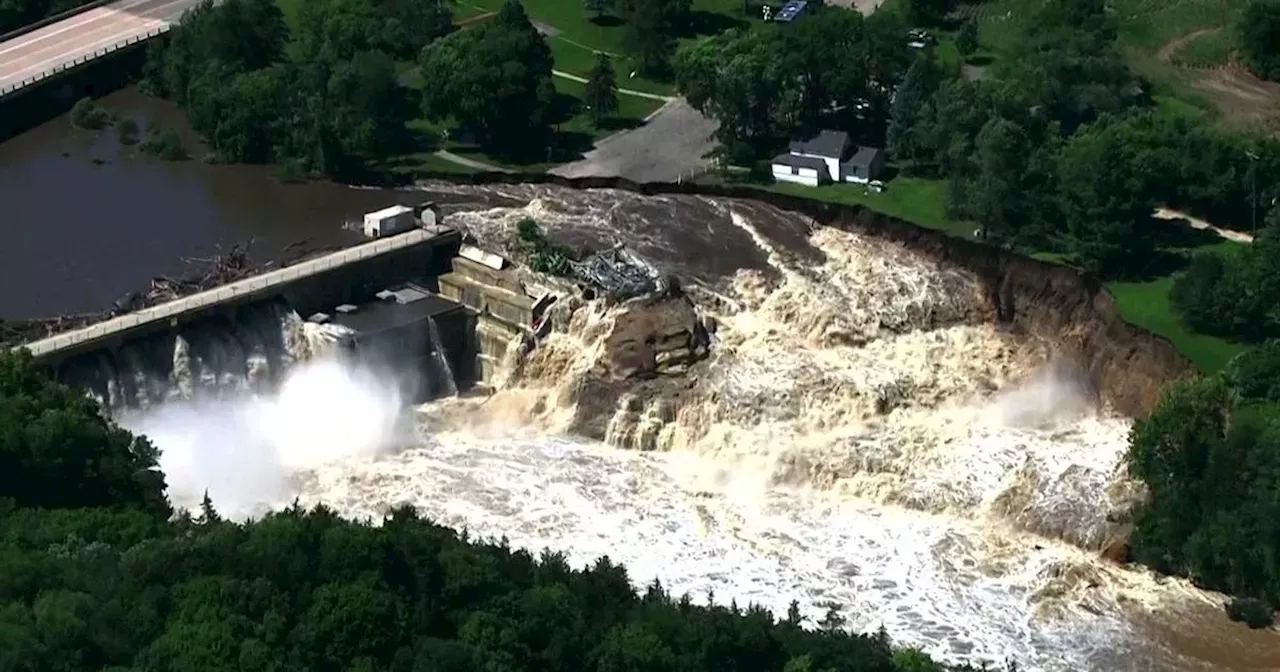Rapidan Dam Flooding

Rapidan dam flooding – The Rapidan Dam, a crucial part of Virginia’s water supply system, experienced significant flooding in recent years. The interplay of heavy rainfall, dam operations, and environmental factors contributed to this event.
The rapidan dam flooding has caused widespread devastation, leaving many communities in ruins. If you’re wondering where the rapidan dam is located, you can find more information by clicking here. The dam’s failure has resulted in the release of millions of gallons of water, causing extensive damage to property and infrastructure.
Causes
Heavy Rainfall: Intense rainfall events, exceeding the capacity of the dam’s reservoir, played a primary role in the flooding. Persistent precipitation over several days saturated the surrounding terrain, increasing runoff into the reservoir.
The torrential downpour relentless upon the Rapidan Dam’s earthen walls could only spell disaster. Its overflow cascaded over the spillway, threatening to burst its seams. Yet, the true extent of the catastrophe lay not in the flooding alone but in the impending dam failure.
As the dam’s integrity faltered, the consequences of a potential breach sent shivers down the spines of those downstream, bracing themselves for the inevitable.
Dam Operations: The dam’s operational procedures also influenced the flooding. To prevent overtopping, dam operators were forced to release water from the reservoir, contributing to the increased water levels downstream.
The Rapidan Dam’s formidable presence has safeguarded the Mankato region from the relentless onslaught of flooding. For more insights into this architectural marvel, delve into the depths of rapidan dam mankato mn. The dam’s unyielding structure stands as a testament to human ingenuity, mitigating the destructive forces of nature and ensuring the well-being of the community it serves.
Environmental Conditions: Environmental factors, such as deforestation and urbanization in the watershed, exacerbated the flooding. Reduced vegetation cover and increased impervious surfaces led to faster runoff and less water absorption, amplifying the impact of rainfall.
Impact
The flooding had severe consequences for the surrounding area. Infrastructure damage included washed-out roads and bridges, disrupting transportation and access to essential services.
The rapidan dam flooding in Minnesota has had a devastating impact on the local communities. Learn more about the rapidan dam in minnesota and its history to understand the severity of the flooding. The dam’s failure has caused widespread damage to homes, businesses, and infrastructure, and has displaced thousands of residents.
Property damage was also significant, with homes and businesses flooded, resulting in displacement and financial losses. The flooding further impacted ecosystems, damaging habitats and displacing wildlife.
Mitigation and Prevention Measures

In response to the devastating flooding at Rapidan Dam, comprehensive measures have been implemented to mitigate future risks and protect downstream communities. These measures include:
Spillway Modifications
The original spillway design proved inadequate during the flood, resulting in overtopping and catastrophic failure. Extensive modifications were made to increase the spillway capacity and enhance its ability to safely discharge excess water. The enlarged spillway now features multiple gates and a stepped design to improve flow control and reduce the risk of overtopping.
Dam Reinforcement, Rapidan dam flooding
To strengthen the dam structure and prevent future failures, significant reinforcement measures were undertaken. These included grouting to seal cracks and weaknesses, as well as the installation of additional buttresses and anchors. The reinforced dam is now more resilient to the forces of flooding and better equipped to withstand extreme water pressure.
Flood Warning Systems
To provide timely alerts and enable early evacuation, a comprehensive flood warning system has been established. This system includes sensors to monitor water levels, rainfall intensity, and other critical parameters. In the event of an impending flood, warnings are disseminated through multiple channels, including sirens, text messages, and social media, allowing residents to take appropriate actions to protect themselves and their property.
Effectiveness of Mitigation Measures
The implemented mitigation measures have significantly reduced the risk of future flooding at Rapidan Dam. The enlarged spillway effectively manages excess water discharge, preventing overtopping and catastrophic failure. The reinforced dam structure ensures stability and resilience against flooding forces. The flood warning system provides ample time for evacuation, minimizing potential loss of life and property damage. These measures have collectively enhanced the safety and resilience of downstream communities, giving them confidence that future flooding events can be effectively managed and mitigated.
Case Study and Lessons Learned: Rapidan Dam Flooding

The Rapidan Dam flooding event serves as a valuable case study for examining the challenges faced in flood management and the lessons that can be learned to prevent similar incidents in the future.
Challenges Faced
- Inaccurate Flood Forecasting: The flood forecasting system failed to accurately predict the severity of the rainfall and the resulting floodwaters.
- Insufficient Dam Capacity: The dam’s capacity was insufficient to handle the volume of floodwaters, leading to overtopping and subsequent flooding.
- Lack of Emergency Response Plan: The absence of a comprehensive emergency response plan hindered the timely and effective response to the flooding.
Lessons Learned
The Rapidan Dam flooding event highlighted several key lessons that can be applied to improve flood management practices:
- Enhance Flood Forecasting: Invest in advanced flood forecasting systems that can accurately predict rainfall and floodwaters.
- Increase Dam Capacity: Consider increasing the capacity of dams to accommodate extreme rainfall events.
- Develop Emergency Response Plans: Establish comprehensive emergency response plans that Artikel clear roles and responsibilities for all stakeholders.
- Conduct Regular Dam Inspections: Regularly inspect dams to ensure their structural integrity and identify any potential vulnerabilities.
- Educate the Public: Raise public awareness about flood risks and encourage preparedness measures.
As the relentless waters of the Rapidan Dam surge forward, inundating vast tracts of land, it’s imperative to understand the dam’s geographical context. Situated at a crucial location where the Rapidan River meets the Blue Ridge Mountains, the dam’s failure has unleashed a devastating cascade of events, leaving communities in its wake grappling with the catastrophic consequences of this natural disaster.